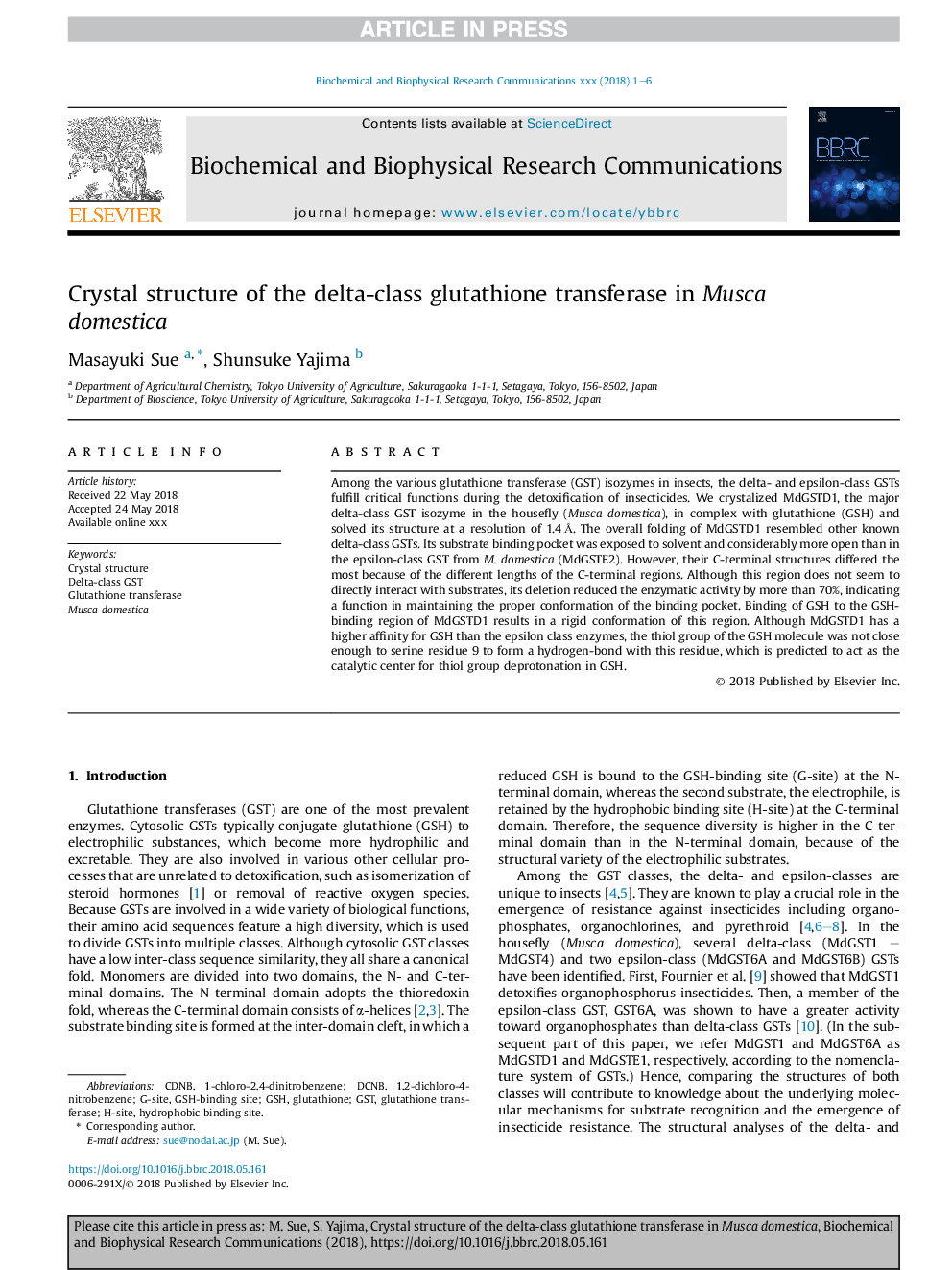| Article ID | Journal | Published Year | Pages | File Type |
|---|---|---|---|---|
| 8292351 | Biochemical and Biophysical Research Communications | 2018 | 6 Pages |
Abstract
Among the various glutathione transferase (GST) isozymes in insects, the delta- and epsilon-class GSTs fulfill critical functions during the detoxification of insecticides. We crystalized MdGSTD1, the major delta-class GST isozyme in the housefly (Musca domestica), in complex with glutathione (GSH) and solved its structure at a resolution of 1.4â¯Ã
. The overall folding of MdGSTD1 resembled other known delta-class GSTs. Its substrate binding pocket was exposed to solvent and considerably more open than in the epsilon-class GST from M. domestica (MdGSTE2). However, their C-terminal structures differed the most because of the different lengths of the C-terminal regions. Although this region does not seem to directly interact with substrates, its deletion reduced the enzymatic activity by more than 70%, indicating a function in maintaining the proper conformation of the binding pocket. Binding of GSH to the GSH-binding region of MdGSTD1 results in a rigid conformation of this region. Although MdGSTD1 has a higher affinity for GSH than the epsilon class enzymes, the thiol group of the GSH molecule was not close enough to serine residue 9 to form a hydrogen-bond with this residue, which is predicted to act as the catalytic center for thiol group deprotonation in GSH.
Keywords
Related Topics
Life Sciences
Biochemistry, Genetics and Molecular Biology
Biochemistry
Authors
Masayuki Sue, Shunsuke Yajima,
